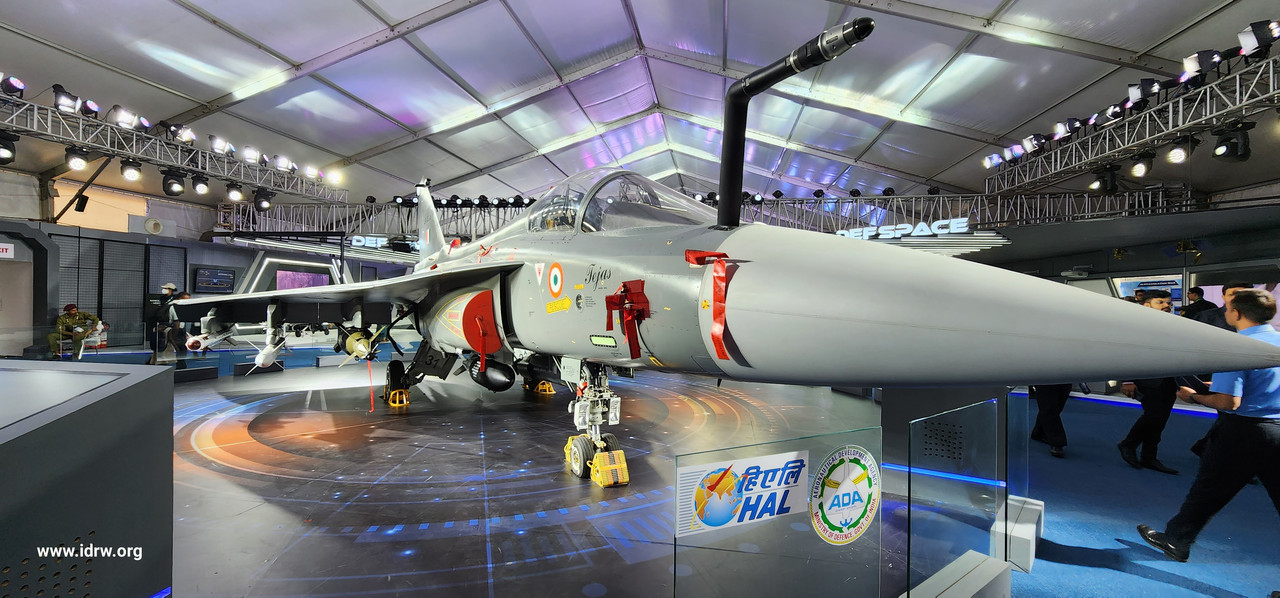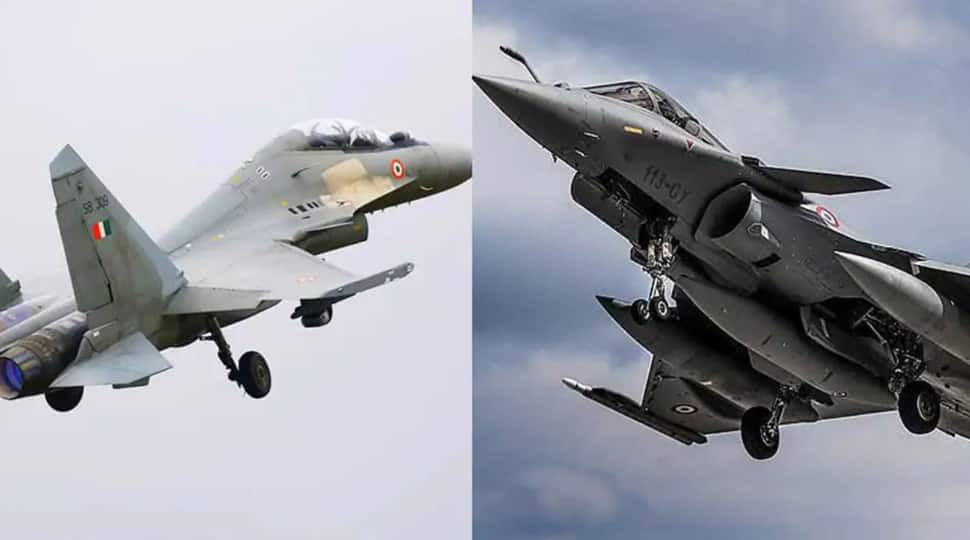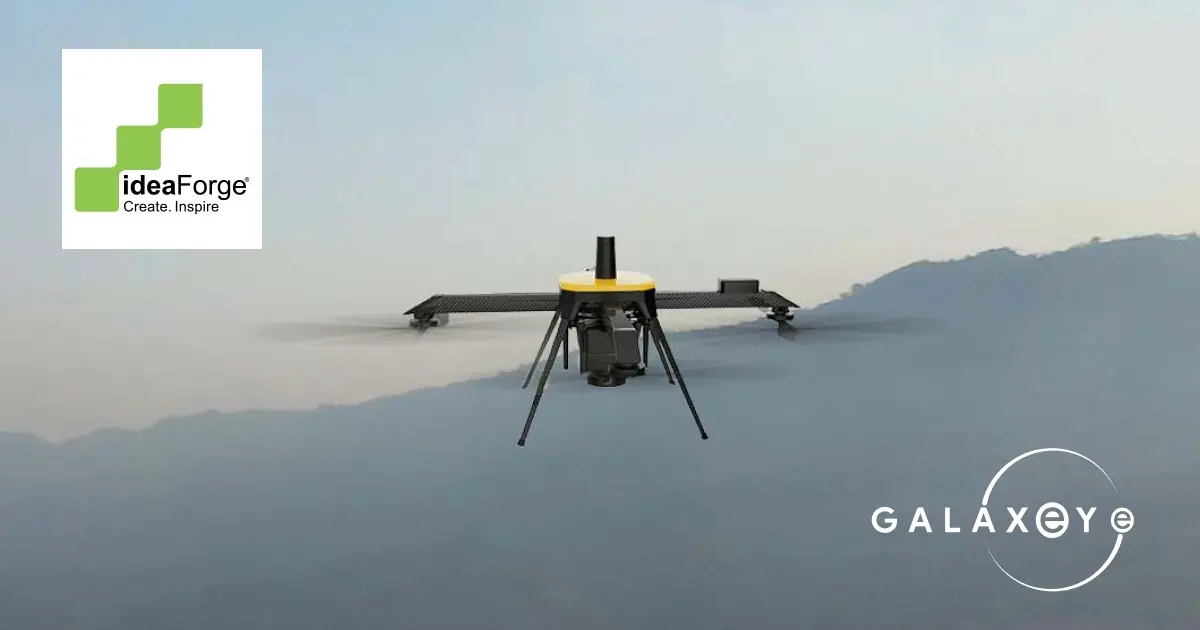SOURCE: RAUNAK KUNDE / NEWS BEAT / IDRW.ORG

The Indian Air Force (IAF) is considering a new approach for maintaining the F-404 engines that power its Tejas Mk1A fighter jets. This strategy takes inspiration from the IAF’s management of its Pilatus PC-7 Mk.II trainer fleet.
Similar to how the IAF directly engages with Pratt & Whitney, the engine manufacturer for the PC-7, the Air Force is mulling bypassing Hindustan Aeronautics Limited (HAL) and working directly with GE Aerospace, the makers of the F-404 engines. This approach aims to streamline the spare parts and supply chain process, eliminating unnecessary middlemen.
Continue readingSOURCE: RAUNAK KUNDE / NEWS BEAT / IDRW.ORG

Rolls-Royce is actively campaigning its MT30 Marine Gas Turbine for the propulsion system of the Indian Navy’s upcoming IAC-2 aircraft carrier. This comes after the MT30 was initially considered for a larger, 65,000-ton carrier project that was later shelved in favor of the 44,000-ton INS Vikrant, currently powered by General Electric LM2500 engines.
Rolls-Royce sees IAC-2, the sister ship to INS Vikrant, as a crucial opportunity for the MT30. The company is highlighting the potential for engine continuity when the even larger IAC-III carrier is built, especially considering Defense Minister Rajnath Singh’s suggestion of a future Indian Navy with more than four carriers.
Continue readingSOURCE: RAUNAK KUNDE / NEWS BEAT / IDRW.ORG

The Indian light combat aircraft, Tejas, seems to have hit a roadblock in its potential export to Botswana. Discussions between Botswana Defence Force (BDF) and Hindustan Aeronautics Limited (HAL) regarding the Tejas fighter jet’s acquisition, which emerged during the 2023 Aero India show in Bengaluru, have reportedly stalled.
The BDF has been actively seeking replacements for its aging fleet of 10 CF-5A and three CF-5D fighter aircraft and fighter trainers. However, their search hasn’t yielded any concrete results. Talks with other potential suppliers, including South Korea for the FA-50 and Sweden for the Saab JAS-39 Gripen, have also failed to progress in Past.
Continue readingSOURCE: AFI

US engine manufacturer, GE Aerospace, has acknowledged delays in supplying F404 engines for India’s Light Combat Aircraft (LCA) Tejas Mk-1A program. The company attributes the setbacks to ongoing supply chain challenges within the aerospace industry.
In a statement, a GE Aerospace spokesperson confirmed they are collaborating with Hindustan Aeronautics Limited (HAL), the state-run defense contractor, and their suppliers to address the constraints and expedite the delivery of F404-IN20 engines for the Tejas Mk-1A project.
Continue readingSOURCE: AFI
)
Thane-based Avyaya Aerospace India Pvt Ltd is poised to revolutionize Indian defense capabilities with its next-generation swarm drone technology. By the end of 2025, the company aims to present these advanced drones to the Indian Army, marking a significant leap in the country’s military prowess.
Avyaya Aerospace stands at the cutting edge of swarm drone development. These drones will operate cooperatively, enabling them to undertake a wide range of missions critical for defense, disaster management, and extensive surveillance.
Continue readingSOURCE : AFI

Bharat Karnad, an emeritus professor in National Security Studies at the Centre for Policy Research in Delhi, has recently voiced critical insights regarding India’s current air force strategy in his latest column. A respected national security expert, Karnad offers a comprehensive analysis of the Indian Air Force’s (IAF) capabilities and the strategic decisions influencing its future.
Karnad argues that India lacks both symmetric and asymmetric force advantages along the Line of Actual Control (LAC) with China. He contends that the People’s Liberation Army Air Force (PLAAF) could quickly rectify this imbalance by deploying a significant number of aircraft from mainland bases. Despite this, Karnad believes that the current IAF aircraft mix can effectively counter large numbers of Chinese aircraft operating from Tibetan plateau bases for the time being. This is primarily due to the altitude handicap faced by Chinese planes, which struggle with the fuel load-weapon load dilemma when taking off from high-altitude bases—an issue that IAF aircraft launching from the plains do not encounter.
Continue readingSOURCE : AFI

In May 2024, significant updates have been made to the Standard Operating Procedure (SOP) and Open General Export Licenses (OGELs) for exporting munitions list items, as announced by the Department of Defence Production (DDP). These modifications aim to streamline defence exports and support India’s Defence Export Strategy.
The SOP for defence exports has been revised to be more business-friendly, facilitating easier compliance for exporters. These changes are part of a broader initiative to simplify regulatory processes and promote the ease of doing business in the defence sector. By reducing bureaucratic hurdles, the new SOP is expected to encourage more companies to engage in defence exports.
Continue readingSOURCE: IDRW.ORG
:quality(70)/cloudfront-us-east-1.images.arcpublishing.com/archetype/UG4WSMRSZVC6BOLLPOQCRTZ22A.jpg)
Taneja Aerospace and Aviation Limited (TAAL) has secured a contract for the modification and installation of advanced instrumentation on a fleet of helicopters. The undisclosed Hyderabad-based company awarded the contract, which involves equipping twelve Kamov-31 helicopters with the SARANG Electronic Support Measures (ESM) system.
Developed indigenously by the Defence Electronics Research Laboratory (Hyderabad) under the Samudrika program, SARANG is a sophisticated ESM system specifically designed for Indian Navy helicopters. This project will significantly enhance the electronic warfare capabilities of the Navy’s rotary wing assets.
Continue readingSOURCE: IDRW.ORG

IIT Jammu’s deep-tech startup, SAP Aerospace, has proposed the development of a new Medium-Altitude Long-Endurance (MALE) drone named “Black Bird.” This Tier II UAV (Unmanned Aerial Vehicle) has the potential to significantly enhance India’s aerial surveillance and reconnaissance capabilities.
The Black Bird is classified as a MALE UAV, designed to operate at medium altitudes up to 5 kilometers (16404.20 ft) . This altitude range enables the UAV to perform a wide array of missions, from surveillance and reconnaissance to environmental monitoring and disaster management.
Continue readingSOURCE: AFI

Three years after India’s agreement with GE for F-404 engine supplies, a critical situation has emerged. Delays due to supply chain issues and a dwindling order book from other manufacturers threaten the timely delivery of the remaining 99 engines. This shortage could significantly impact production of the Tejas Mk1A fighter jets.
South Korea’s experience with the FA-50 program offers a stark contrast. By achieving Transfer of Technology (ToT) for the F-404 engine, South Korea ensured a stable supply chain and maintained a high production rate for its jets. India, lacking ToT, faces dependence on external factors beyond its control.
Continue readingSOURCE: AFI

Bharat-Forge, a leading Indian defense manufacturer, is experiencing a surge in inquiries for its artillery guns from European nations. This growing interest coincides with the company’s rising reputation for possessing the world’s most extensive portfolio of 7 artillery guns.
Bharat-Forge’s impressive artillery portfolio includes the ATAGS, MArG 155-BR, Garuda 105-V2, Bharat 52, Bharat ULH 155mm 39 CAL, and MGS 155mm/52 Cal guns. Industry sources suggest that the Bharat ULH 155mm 39 CAL and Garuda 105-V2 models are particularly attracting the attention of European countries.
Continue readingSOURCE: AFI

International Aerospace Manufacturing Pvt Ltd (IAMPL), a joint venture between Rolls-Royce and Hindustan Aeronautics Ltd (HAL), is setting its sights on significant growth in Tamil Nadu. The company is actively exploring the possibility of establishing four to five new manufacturing units in the state, according to Kishore Jayaraman, President of Rolls-Royce – India and South Asia.
During a discussion at the Tamil Nadu Technology Hub (iTNT hub) day event, Mr. Jayaraman highlighted the positive factors influencing IAMPL’s expansion plans in Tamil Nadu. He commended the state’s strong infrastructure, skilled workforce, excellent academic institutions, and supportive governance.
Continue readingSOURCE: AFI

IdeaForge, a leading drone manufacturer based in Navi Mumbai, has acquired a non-controlling stake in GalaxEye Space, a Bengaluru-based spacetech startup, for INR 8.28 crore (approximately $1 million). This strategic move comes after the two companies reportedly signed an agreement earlier this year to collaborate on the development of a foliage penetration radar-equipped unmanned aerial vehicle (UAV).
The acquisition underscores IdeaForge’s commitment to developing advanced drone-based sensors. GalaxEye Space’s expertise in multi-sensor imaging satellites aligns perfectly with IdeaForge’s vision of creating next-generation drones capable of operating in challenging environments like foggy and foliage-dense areas.
Continue readingSOURCE: AFI

Just days before the recent NATO summit in Washington, the Shanghai Cooperation Organization (SCO) held its annual meeting in Astana, Kazakhstan. This gathering of leaders from the world’s largest regional organization saw the addition of Belarus to the bloc.
Established in 2001 by China and Russia, the SCO’s initial focus was on security and economic matters in Central Asia. However, amidst intensifying global competition and strained relations with the West, China and Russia are increasingly portraying the SCO as a counterweight to the US-led international order.
Continue readingSOURCE: RAUNAK KUNDE / NEWS BEAT / IDRW.ORG

Hindustan Aeronautics Limited (HAL), India’s state-owned defense contractor, faces a hurdle in its Tejas Mk-1A program due to delayed engine deliveries from General Electric (GE) Aerospace. GE, contracted in 2021 for a fresh batch of 99 F404-GE-IN20 engines valued at $716 million, hasn’t delivered any new units as of July 2024. This delay impacts the Tejas Mk-1A’s production schedule, with several aircraft awaiting engines.
Sources at idrw, report that HAL is considering an alternative solution. They plan to utilize a combination of reserved F404 engines and some used on older prototypes to power the initial Tejas Mk-1A batch. This approach aims to keep production moving while awaiting GE’s deliveries.
Continue reading